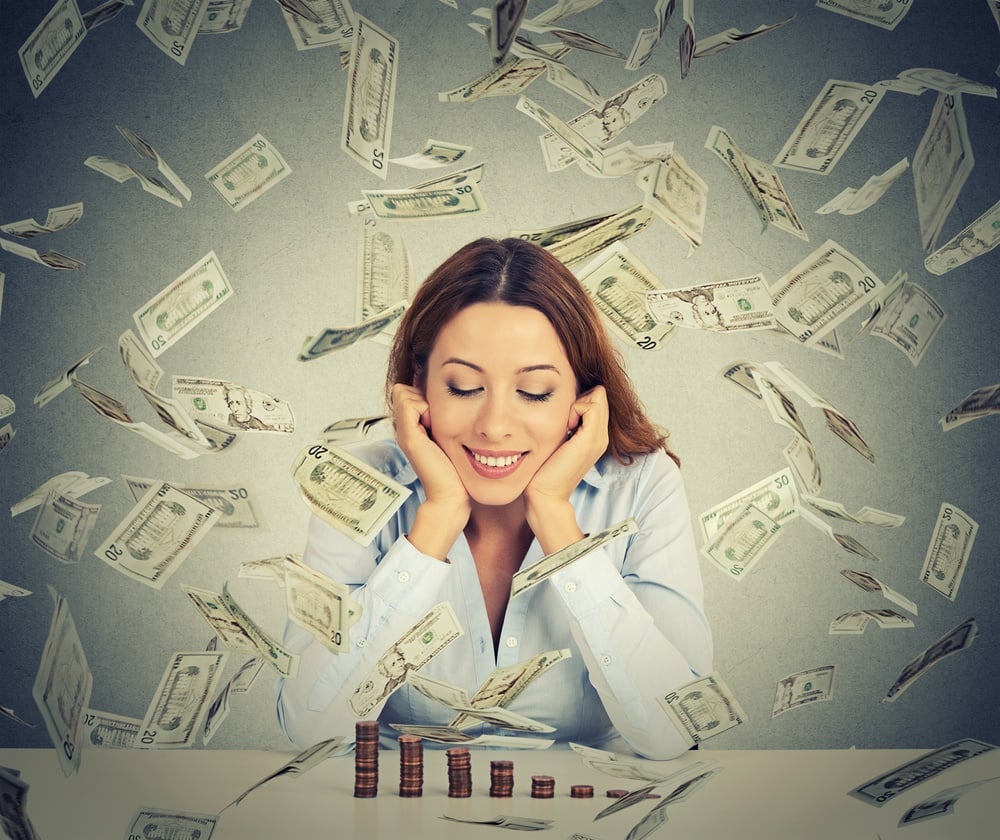How to Adjust Your Budget And Why You Should
Once you’ve made your budget and stuck to it for a couple months, take a second to congratulate yourself. You’ve taken a huge step towards financial...
4 min read
 Chris Gottschalk
:
Apr 20, 2023 4:45:00 AM
Chris Gottschalk
:
Apr 20, 2023 4:45:00 AM

Over the past couple of years, you might have realized that your money isn’t going as far as it used to. For the most part, that’s due to inflation, aka having to pay more for everything from groceries to car parts.
It’s safe to say that no one is a fan of inflation. However, companies have figured out a way to charge more for their products without customers realizing they’re paying more. It’s a devious practice called shrinkflation, and it’s not just a way for companies to charge more for their products—it’s also a way to trick consumers into buying more.
.jpg?width=1200&height=630&name=FA812_23_Blog_Shrinkflation%20(1).jpg)
Shrinkflation is when a company reduces the size of the item it’s selling, yet still charges you the same amount it did for the previous size. For example, let’s say that you regularly buy a two-pound bag of flour for $3. The next time you go to the store, though, you discover that you can still buy a bag of flour for $3, but the bag only weighs 1.75 pounds.
Some real-world shrinkflation examples include:
This might not seem like a big deal at first, but eventually you'll end up having to buy more to get the same amount of use. If you're not careful, this can lead to you overspending.
So why do companies give you less for the same price, instead of charging you more for the same amount? The biggest reason is psychological. It’s never fun to discover you have to pay more for an item than you used to, and seeing that an item is more expensive can also make you question whether or not you still want the item in question.
Shrinkflation, on the other hand, disguises the fact that the item has gotten more expensive, so consumers are more likely to keep buying it. In fact, there’s a good chance that you won’t even notice you’re getting less until you realize much later that you have to restock the item in question more than you used to. This is a huge benefit for companies, especially since the more you have to restock, the more likely you are to buy more than you used to, which means higher profits.
Having said that, shrinkflation is terrible for consumers. Buying more than you’re used to means you’re liable to overspend, even if you have a tight budget. When you do realize you’ve been overspending, at best it might be because you’ve had to sacrifice in other areas, but at worst you could end up with a few hundred dollars in credit card debt that you now need to pay off.

Unfortunately, shrinkflation is here to stay. The good news, though, is that you can avoid the worst of it if you follow a few tips.
The first tip is to stop buying by the package and start buying by weight. Going back to the flour example, you can figure out how much you’re really paying simply by dividing the price by the weight. It’s not that hard, especially if you use your smartphone’s calculator app, and once you know how much you’re paying by weight, you’ll have a better idea of whether you’re getting the best value for your money or not.
Once you’ve started shopping by weight, you’re ready to take the next step: abandoning brand loyalty. Almost every generic or in-store brand is as good as the name brands, and they usually cost less as well. You can even take this to the next level by comparing prices for different items at different stores and buying from the store with the best value.
Another way to beat shrinkflation is to save money on groceries by taking advantages of coupons and discount apps. Most stores have new weekly sales on items, and pretty much every chain retail store will advertise those prices with a circular or through their store app. Before you go shopping, look over these ads and see if you can take advantage of these sales.
Finally, buy in bulk. Usually, the more you buy at once the more you’ll save. As an added bonus, you won’t have to restock on these items so much, so it’s also a time-saver.
One thing to keep in mind about buying in bulk is that you'll have to spend more than usual up front. You can account for this extra expense by adjusting your monthly budget. You might want to create an extra category specifically for buying items in bulk, for instance, or you could simply allocate more money to your grocery budget every three or four months.
Shrinkflation is a tricky way for companies to make their products more expensive without customers feeling like they’re paying more. In order to avoid the effects of shrinkflation, learn to shop by weight instead of by package, and buy the product that gives you the most value for your money instead of being loyal to a single brand. You can also get better deals by looking at stores’ weekly sales and buying in bulk.
Another way to keep more money in your account is by becoming a member of First Alliance Credit Union. For instance, you can use the My Money feature in our online banking platform and mobile app to see where you’re spending your money each month and cut down on impulse buys and overpriced items. You can also use direct deposit to channel part of each paycheck into your savings account, so you won’t be tempted to spend it.

Once you’ve made your budget and stuck to it for a couple months, take a second to congratulate yourself. You’ve taken a huge step towards financial...

When you decide to move to a new place, you have to figure out the answer to a lot of questions, such as how you’ll move all your belongings and when...

Family vacations can be wonderful events (especially after being cooped up for the last 12 months!) that will give you and your children memories...